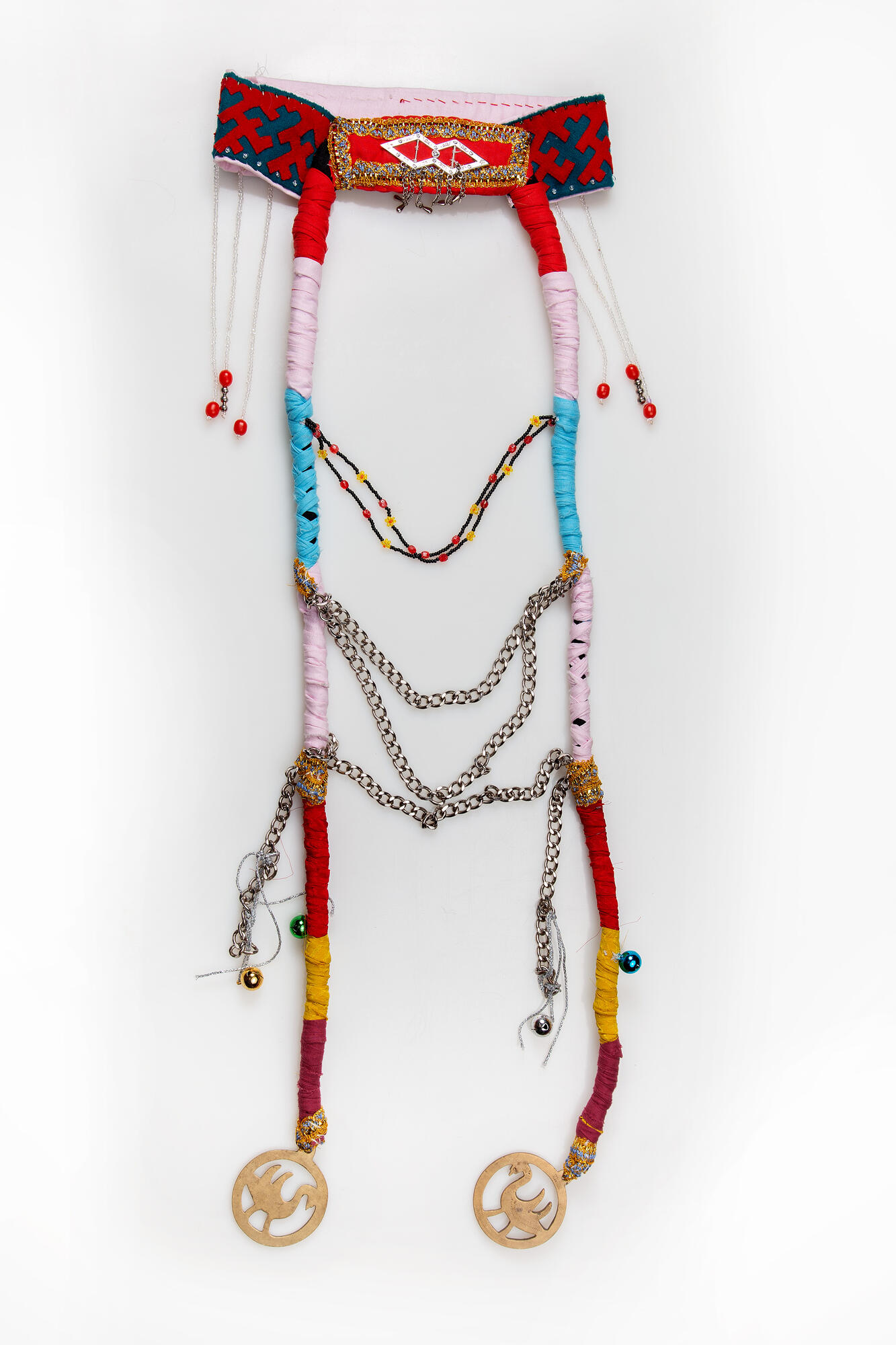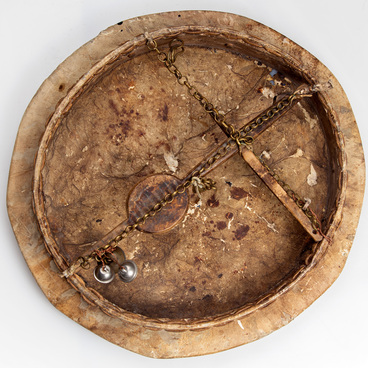False braids are a characteristic Nenets female headdress and decoration. Long cloth bands and wool cords are attached to the ends of the plate, sometimes part of the winding is made of hair. Women part their hair in the middle, make two braids together with cloth plaits, and then tightly wrap a cord on top. When wearing this type of decoration, the hair braids are not visible.
Women wear false braids over a yagushka — traditional women’s clothing made of cloth or fur. Sometimes false braids are tucked behind a woolen belt. Metal pendants pull the braids down and keep them together, so they do not prevent women from doing household chores. Modern Nenets consider false braids a festive women’s decoration. On weekdays, women living in the tundra make two pigtails, and tie up the ends with a simple string.
False braids are decorated with metal pendants, rings, chains, plaques, beads and buttons. The braids are connected to each other by chains of colored beads and pendants. Among the people of the Yamalo-Nenets Autonomous Okrug, hair ornaments are common. The false braids are sewn from fabric, colored patches, threads and decorated with beads. Nakosniki are two long plaits of cloth strips, reaching below the knees and wrapped with colored woolen laces. In addition to being an adornment, nakosniki are considered a cult object and a talisman.
In ancient times, people believed that the chime of metal drives evil spirits away, hence the large number of brass and copper pendants, jewelry and rings. One set of jewelry was supposed to serve as a talisman for a person from early childhood to old age. It included earrings, rings for almost every finger, bracelets and amulets. Metal was considered a sacred material that cleansed a person and space.
Such jewelry rang at the slightest movement. The more adornments a young woman had, the more suitable she was for the role of a bride. The most important function of braid jewelry was signifying a person’s social status and age. By looking at the jewelry, it was possible to determine whether this jewelry was made for a man, a married woman or a young girl.
The false braids from the collection of the Purovsky Museum were made by Polina Turutina, a native Nenets, a connoisseur of Nenets traditions.
Women wear false braids over a yagushka — traditional women’s clothing made of cloth or fur. Sometimes false braids are tucked behind a woolen belt. Metal pendants pull the braids down and keep them together, so they do not prevent women from doing household chores. Modern Nenets consider false braids a festive women’s decoration. On weekdays, women living in the tundra make two pigtails, and tie up the ends with a simple string.
False braids are decorated with metal pendants, rings, chains, plaques, beads and buttons. The braids are connected to each other by chains of colored beads and pendants. Among the people of the Yamalo-Nenets Autonomous Okrug, hair ornaments are common. The false braids are sewn from fabric, colored patches, threads and decorated with beads. Nakosniki are two long plaits of cloth strips, reaching below the knees and wrapped with colored woolen laces. In addition to being an adornment, nakosniki are considered a cult object and a talisman.
In ancient times, people believed that the chime of metal drives evil spirits away, hence the large number of brass and copper pendants, jewelry and rings. One set of jewelry was supposed to serve as a talisman for a person from early childhood to old age. It included earrings, rings for almost every finger, bracelets and amulets. Metal was considered a sacred material that cleansed a person and space.
Such jewelry rang at the slightest movement. The more adornments a young woman had, the more suitable she was for the role of a bride. The most important function of braid jewelry was signifying a person’s social status and age. By looking at the jewelry, it was possible to determine whether this jewelry was made for a man, a married woman or a young girl.
The false braids from the collection of the Purovsky Museum were made by Polina Turutina, a native Nenets, a connoisseur of Nenets traditions.




